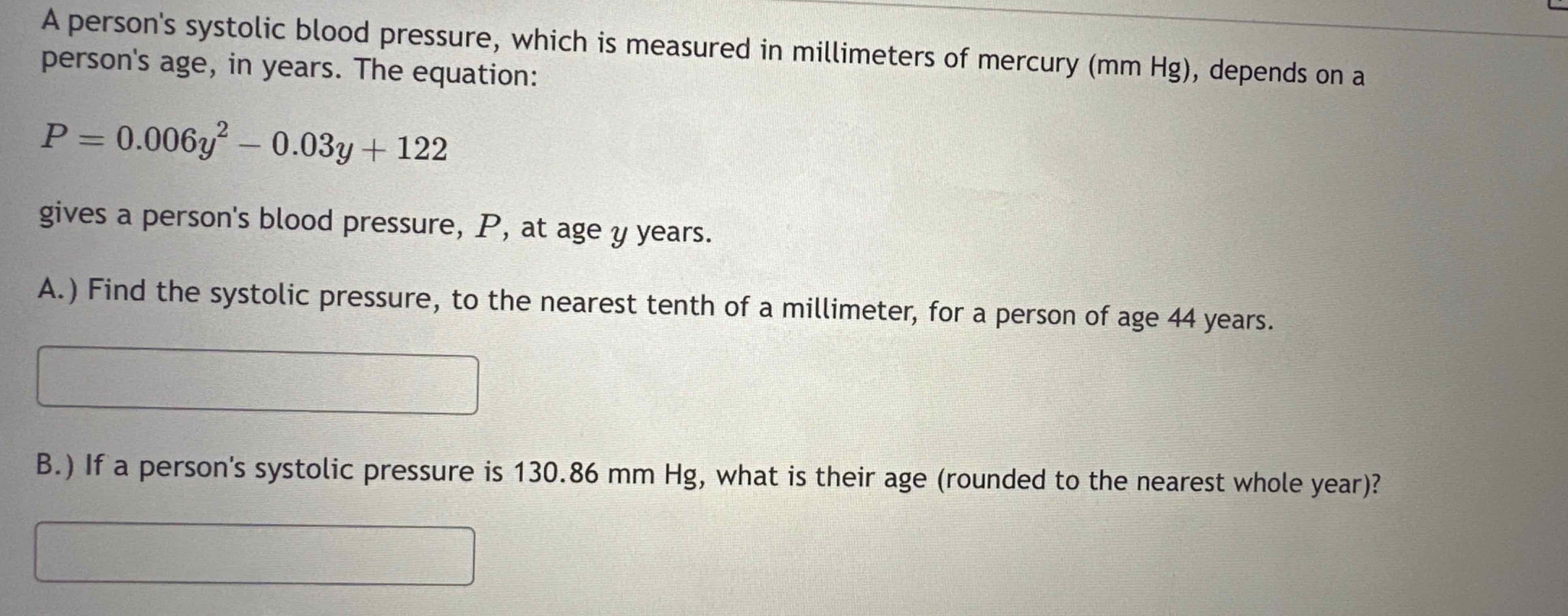AI tutor
Welcome to Bytelearn!
Let’s check out your problem:

A person's systolic blood pressure, which is measured in millimeters of mercury , depends on a person's age, in years. The equation:gives a person's blood pressure, , at age years.A.) Find the systolic pressure, to the nearest tenth of a millimeter, for a person of age years._________B.) If a person's systolic pressure is , what is their age (rounded to the nearest whole year)?_______
Full solution
Q. A person's systolic blood pressure, which is measured in millimeters of mercury , depends on a person's age, in years. The equation:gives a person's blood pressure, , at age years.A.) Find the systolic pressure, to the nearest tenth of a millimeter, for a person of age years._________B.) If a person's systolic pressure is , what is their age (rounded to the nearest whole year)?_______
- Calculate Systolic Pressure: A.) Calculate the systolic pressure for a person aged years.Substitute into the equation .Round to the nearest tenth: mmHg.
- Solve for y: B.) Solve for y when mmHg.Set the equation .Use the quadratic formula , where , , .Discriminant = Discriminant = . + .Discriminant = . (not possible as age cannot be negative)Round to the nearest whole year: years.
More problems from Solve quadratic equations: word problems
QuestionGet tutor help
QuestionGet tutor help
QuestionGet tutor help
QuestionGet tutor help
QuestionGet tutor help
QuestionGet tutor help
QuestionGet tutor help
QuestionGet tutor help
